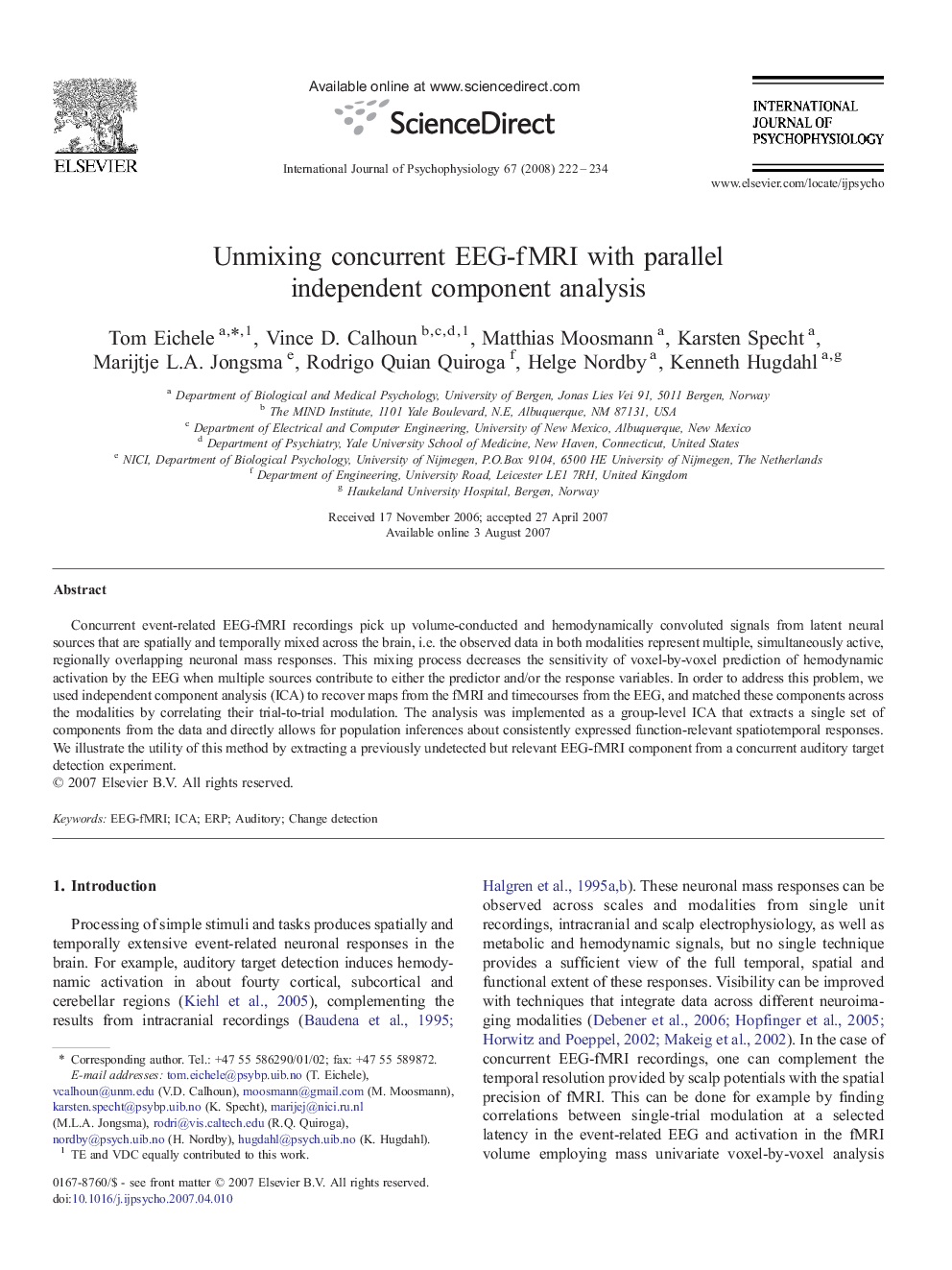| Article ID | Journal | Published Year | Pages | File Type |
|---|---|---|---|---|
| 930727 | International Journal of Psychophysiology | 2008 | 13 Pages |
Concurrent event-related EEG-fMRI recordings pick up volume-conducted and hemodynamically convoluted signals from latent neural sources that are spatially and temporally mixed across the brain, i.e. the observed data in both modalities represent multiple, simultaneously active, regionally overlapping neuronal mass responses. This mixing process decreases the sensitivity of voxel-by-voxel prediction of hemodynamic activation by the EEG when multiple sources contribute to either the predictor and/or the response variables. In order to address this problem, we used independent component analysis (ICA) to recover maps from the fMRI and timecourses from the EEG, and matched these components across the modalities by correlating their trial-to-trial modulation. The analysis was implemented as a group-level ICA that extracts a single set of components from the data and directly allows for population inferences about consistently expressed function-relevant spatiotemporal responses. We illustrate the utility of this method by extracting a previously undetected but relevant EEG-fMRI component from a concurrent auditory target detection experiment.
